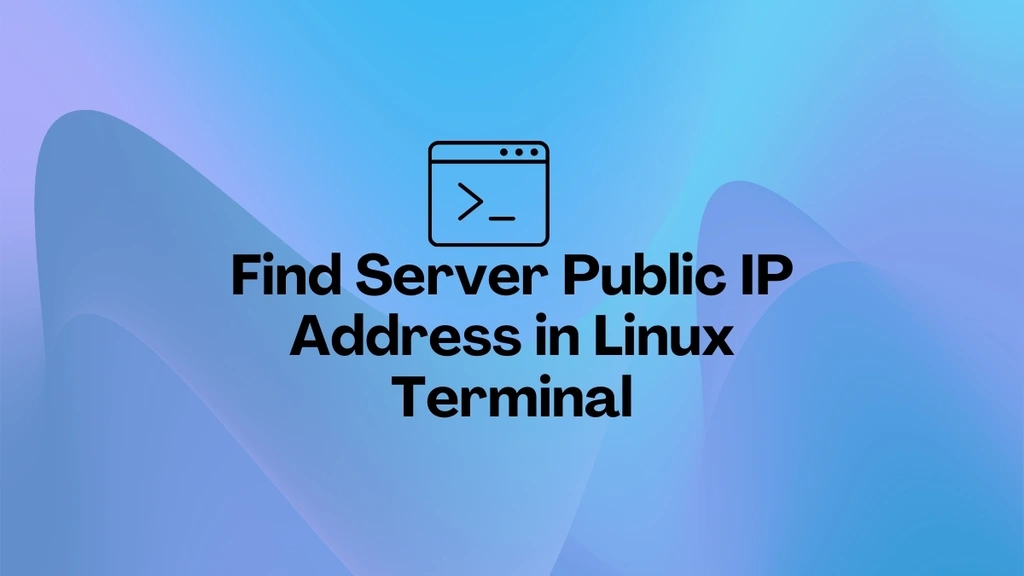
To get Public IP in Linux quickly and easily, you can use simple terminal commands. Knowing your server’s public IP is essential for tasks like remote access, firewall configuration, and application deployment.
In a Linux environment, there are several ways to get Public IP in Linux using the terminal. Whether you’re a system administrator or a beginner, these methods are fast, reliable, and easy to use.
This article will guide you through different commands and utilities like curl, wget, dig, and more, to help you effortlessly get Public IP in Linux. These tools are flexible, making it simple to check your server’s public IP in any situation.
Table of Contents
- 1. Using the curl command to get Public IP in Linux.
- 2. Using wget Command to get Public IP in Linux.
- 3. Using dig Command to get Public IP in Linux.
- 4. Using host Command to get Public IP in Linux.
- 5. Using nslookup Command to get Public IP in Linux.
- 6. Using ip Command with External Service to get Public IP in Linux.
- 7. Using lynx Command to get Public IP in Linux.
- Conclusion
1. Using the curl command to get Public IP in Linux.
The curl command is a versatile tool for transferring data from or to a server. It supports various protocols, including HTTP and HTTPS. To find your server’s public IP address, you can use an external service like ifconfig.me or ipinfo.io.
curl ifconfig.me
curl -4 ifconfig.me
curl -4 ifconfig.co
curl ipaddress.ai
or
curl ipinfo.io/ip
Both commands will return your server’s public IP address. These services are reliable and frequently used for this purpose.
2. Using wget Command to get Public IP in Linux.
Similar to curl, wget is another command-line utility for downloading files from the web. You can use it to query external services to get your public IP address.
wget -qO- ifconfig.me
or
wget -qO- ipinfo.io/ip
The -q option makes wget operate in quiet mode, and -O- directs the output to the terminal.
Read Also | EX200 RHCSA Exam Questions with Solutions: Your Path to RHEL 9 Certification
3. Using dig Command to get Public IP in Linux.
The dig command is part of the DNS utility suite and is used for querying DNS name servers. You can use it to find your public IP address by querying OpenDNS.
dig +short myip.opendns.com @resolver1.opendns.com
This command asks the OpenDNS server to resolve your public IP address.
4. Using host Command to get Public IP in Linux.
The host command is another DNS lookup utility that can be used to find the public IP address of your server.
host myip.opendns.com resolver1.opendns.com
This command queries the OpenDNS resolver to return your public IP address.
5. Using nslookup Command to get Public IP in Linux.
nslookup is a network administration command-line tool for querying the Domain Name System (DNS) to obtain domain name or IP address mapping. You can use it to find your public IP address.
nslookup myip.opendns.com resolver1.opendns.com
This command will return the public IP address of your server.
6. Using ip Command with External Service to get Public IP in Linux.
The ip command is a powerful tool for network management in Linux. While it is generally used for local network configuration, you can combine it with curl to find your public IP address.
curl -s checkip.amazonaws.com
Amazon Web Services (AWS) provides a simple service that returns your public IP address.
7. Using lynx Command to get Public IP in Linux.
lynx is a text-based web browser that can be used to browse the web from the terminal. You can use it to query an external service to get your public IP address.
lynx -dump http://ipecho.net/plain
This command will return your public IP address in a plain text format.
Conclusion
To get Public IP in Linux using various commands and utilities in the terminal. Whether you prefer curl, wget, dig, or other tools, the methods outlined in this article provide multiple ways to retrieve your public IP address efficiently.By leveraging these commands, you can easily manage and configure your server’s network settings to suit your needs.
Checking your public IP in Linux is a simple but essential task. It can be done quickly using a few terminal commands.
Tools like curl, wget, and dig offer different ways to get the job done, depending on your preferences.
These commands help you gather important information needed for tasks such as remote access, firewall setup, or deploying applications.
Whether you’re managing a single server or an entire infrastructure, knowing how to get your public IP via the terminal is a valuable skill.
With these easy commands at your fingertips, keeping track of your server’s public IP becomes straightforward—making network management smoother and more efficient.
Read Also | Best CentOS and Redhat Alternatives | Open Source Linux OS




